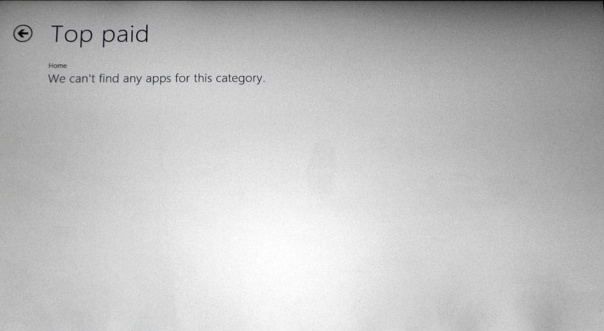A bit of news that squeaked out during the Win8 festivities was the launch of the Microsoft app store. In the version of the software I was using, the app has always been there but it wasn’t available until today. To be clear, the app store here is still in its absolute infancy and is, at best, a hall of demos for various app providers.
The real test of Windows 8 will be the adoption of the OS’s new design paradigms. While everyone will eventually have to fix their apps to reflect Win8’s major architecture changes, there is going to be a lot of hand-holding until the Win9 (potentially) destroys all vestigial Windows cruft. For example, Windows 8 still uses a legacy version of the registry inside Windows 8, a necessary evil required by many applications. Many apps won’t be able to update to Win8 UI standards and many more apps won’t trickle over to the Microsoft app store. It’s this disconnect that will challenge Windows 8 in the first few years of life.
Microsoft knows this yet the Windows business model won’t allow for anything different. The biggest complaint non-die-hards will have with Win8 is the dependence on the old Windows XP desktop. When I asked the Microsoft spokesfolks about this, they explained that the desktop experience was still the best way to interact with files on a general purpose computer, a concept that Microsoft is surely hoping will go away over the next few years.
The real problem, then, will be app store adoption and, more important, the desire by devs to program for Metro as opposed to “Windows” as we once knew it. Metro will require a new set of tools as well as a new aesthetic and the vector-based graphics do not lend themselves to the usual Windows monstrosities in-house programming teams have been rolling out over the past decade. User experience, once a second or third tier concern, is now at the forefront and the crutch of XP mode will reduce the impetus of the average programmer to really ramp up these dormant skills.
All is not lost. Microsoft has a lot of money and they’ve been evangelizing their new platform to programmers, both desktop and mobile, by offering test hardware and cash incentives. The Metro UI also lends itself to “mini-apps” (Twitter clients, email apps, etc.) that, for the time being, are being built in Adobe Air, and games like Cut the Rope. The hardest thing will be to recreating the experience of dragging and dropping lots of files from place to place and editing major documents in Windows 8, another reason the XP mode is important.
In the end, Microsoft is facing a hard, long road. They have an entrenched user base and an entrenched system for the distribution of apps. Unlike their mobile offerings, people have been installing the same apps the same way since time immemorial. To change the way Windows works so drastically – from the way programmers program to the way users interact with applications to the way those applications are sold – is a bold endeavor and one fraught with peril. It will take quite a while, but rest assured Microsoft will force everyone to move over to their new way of thinking. The question is how long will it take for these changes to become generally accepted and how often will people throw their hands up in exasperation when things aren’t working like they “used to?”
